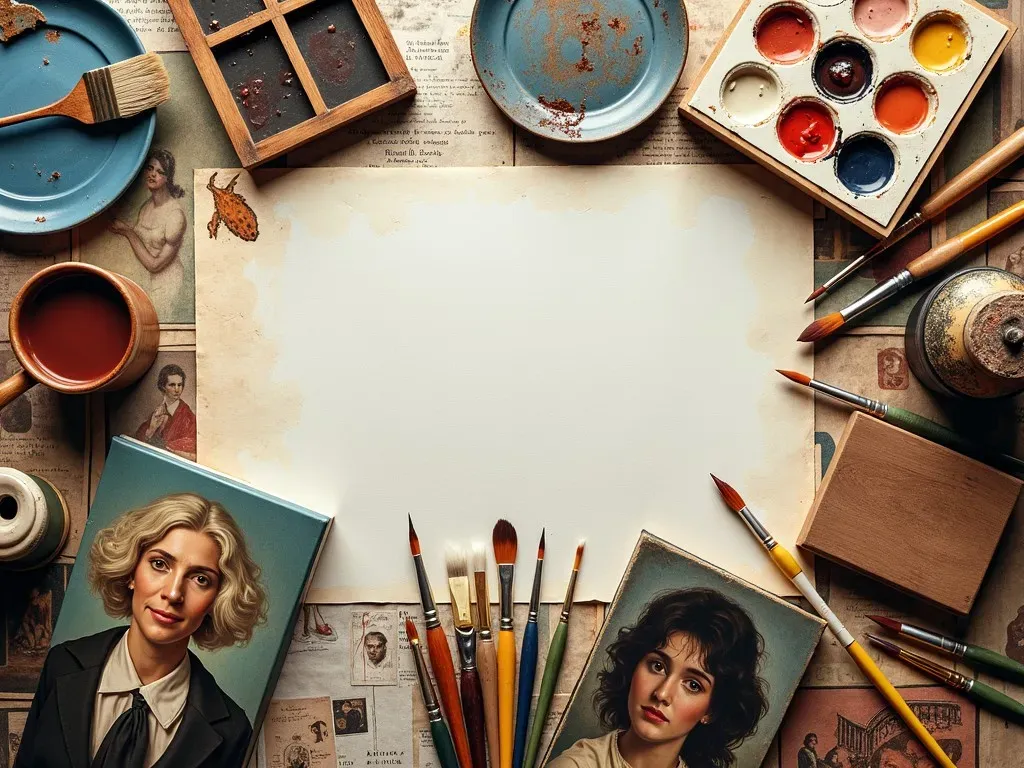When it comes to exploring the rich tapestry of American art, one invaluable resource is a list of American painters by last name. This compilation not only showcases celebrated artists but also allows art enthusiasts to easily identify and contextualize their contributions to the world of visual arts. Below, we will delve into impressive names, their backgrounds, and significant works, all categorized meticulously by their last names.
A-Z List of American Painters
Here is an extensive list of American painters by last name, highlighting some of the most influential artists throughout history. The following table summarizes prominent American painters along with their notable works:
| Last Name | First Name | Notable Works | Born |
|---|---|---|---|
| Abbey | Edwin Austin | "The Quest of the Holy Grail" | 1852 |
| Albright | Ivan | "The Sad Young Man" | 1897 |
| Audubon | John James | "Birds of America" | 1785 |
| Basquiat | Jean-Michel | "Untitled (1981)" | 1960 |
| Bierstadt | Albert | "The Rocky Mountains, Lander’s Peak" | 1830 |
| Cassatt | Mary | "The Child’s Bath" | 1893 |
| Cole | Thomas | "The Oxbow" | 1836 |
| Eakins | Thomas | "The Gross Clinic" | 1875 |
| O’Keeffe | Georgia | "Black Iris" | 1926 |
| Whistler | James Abbott McNeill | "Arrangement in Grey and Black No. 1" | 1834 |
Notable Movements and Their Representatives
The list of American painters by last name not only includes individual artists but also reflects various movements that have shaped American art. Below are some influential art movements with their associated key figures:
1. American Impressionism
- Key Figures: Mary Cassatt, Childe Hassam, and J. Alden Weir
- Characteristics: Focus on light and its changing qualities, brush strokes that are visible, and everyday subject matters.
2. Abstract Expressionism
- Key Figures: Jackson Pollock, Mark Rothko, and Willem de Kooning
- Characteristics: Emphasis on spontaneous, automatic, or subconscious creation.
3. Realism
- Key Figures: Thomas Eakins, Winslow Homer, and Andrew Wyeth
- Characteristics: Depiction of subjects as they appear in everyday life, including laborers, families, and rural America.
4. Modernism
- Key Figures: Edward Hopper, Georgia O’Keeffe, and Alfred Stieglitz
- Characteristics: Focus on breaking away from tradition, experimenting with form and color, and reflecting on the complexities of modern life.
Diverse Mediums Depicted by American Painters
American painters have explored various artistic mediums over the years. Here’s a breakdown of the most utilized mediums in American painting:
| Medium | Description | Notable Painters |
|---|---|---|
| Oil on Canvas | Traditional painting technique | Thomas Cole, Georgia O’Keeffe |
| Watercolor | Fast-drying and versatile | Winslow Homer, John La Farge |
| Acrylic | Fast-drying synthetic paint | Robert Rauschenberg, Ralph Steadman |
| Mixed Media | Combination of different media | Jean-Michel Basquiat, Jasper Johns |
| Printmaking | Reproducing artwork via printing | Martin Lewis, Andy Warhol |
Frequently Asked Questions (FAQs)
1. Where can I find a comprehensive list of American painters by last name?
You can find an extensive list of American painters on Wikipedia which provides an organized catalog by name, highlighting vital details about each artist’s life and contributions.
2. What are some famous works by American painters?
Some iconic works include:
- "The Oxbow" by Thomas Cole
- "Black Iris" by Georgia O’Keeffe
- "Untitled (1981)" by Jean-Michel Basquiat
3. How can I learn more about specific American painters?
Art-specific databases and resources, such as Artcyclopedia, provide in-depth information about artists, their biography, and their body of work.
4. Are there any notable female American painters?
Yes, several female artists like Georgia O’Keeffe, Mary Cassatt, and Helen Frankenthaler have made significant contributions and are celebrated for their unique perspectives and approaches to art.
5. Can I search for artists by first name or initials?
Yes, websites like Artists’ Signatures allow you to search for artists by their name or initials, making it easier to find specific works.
The exploration of American painters by last name illuminates the diverse artistic contributions made across multiple eras and movements. Each name listed holds a story and artistic legacy, enriching the cultural landscape of America.
